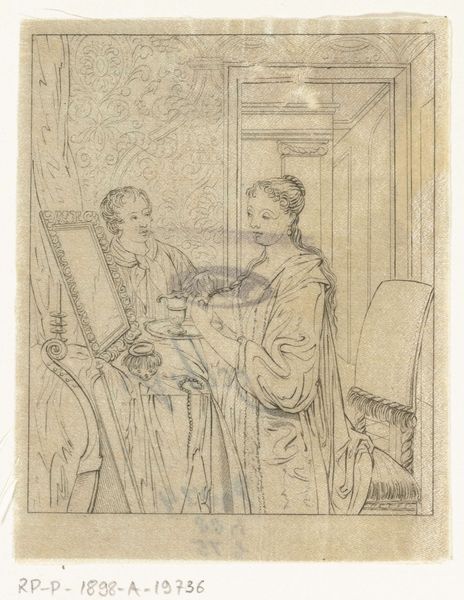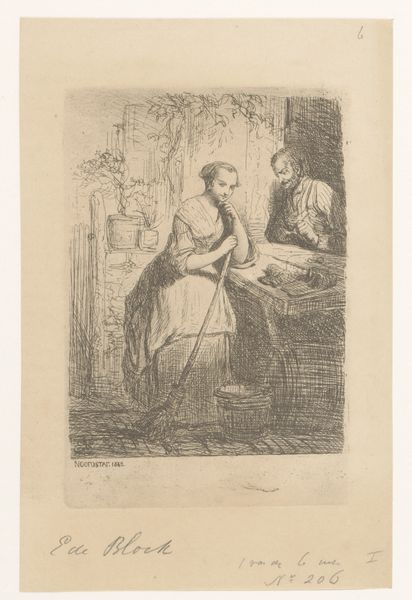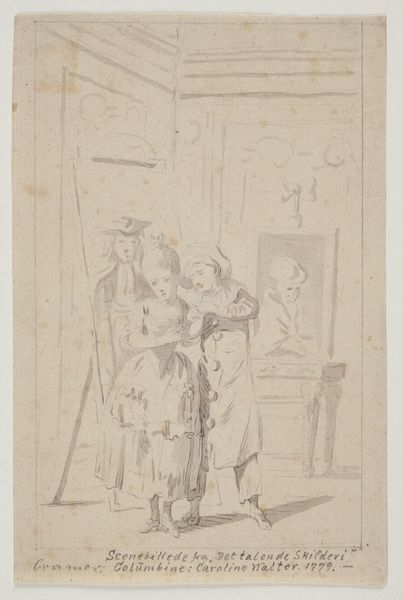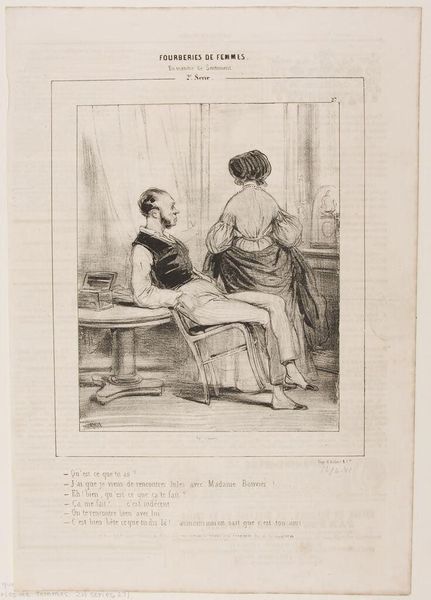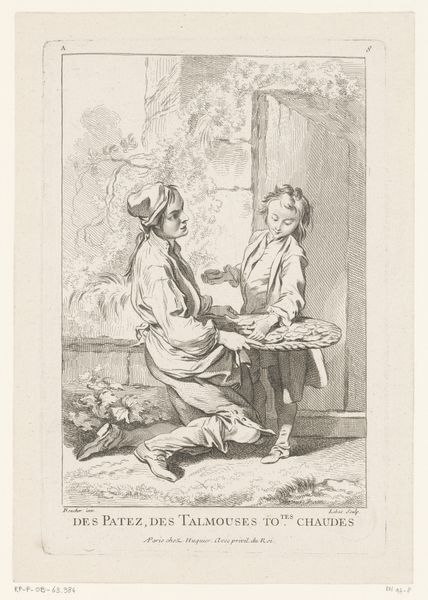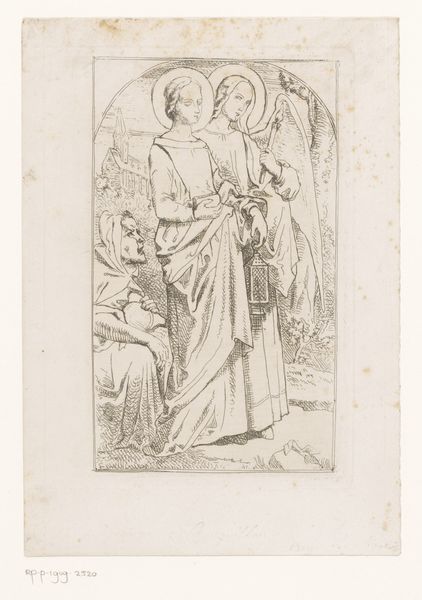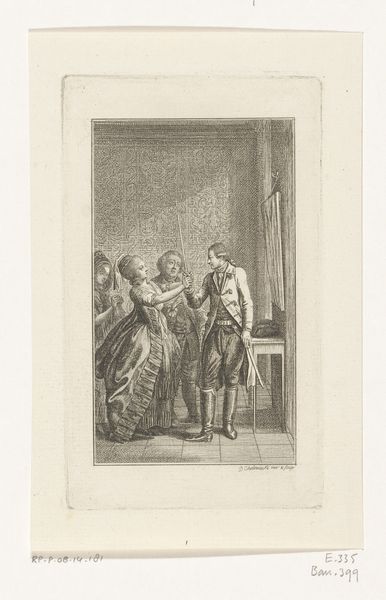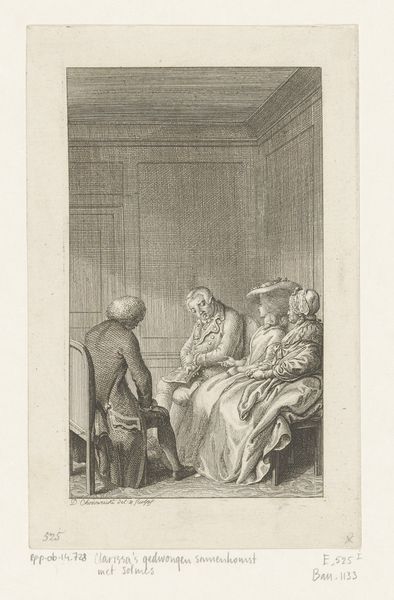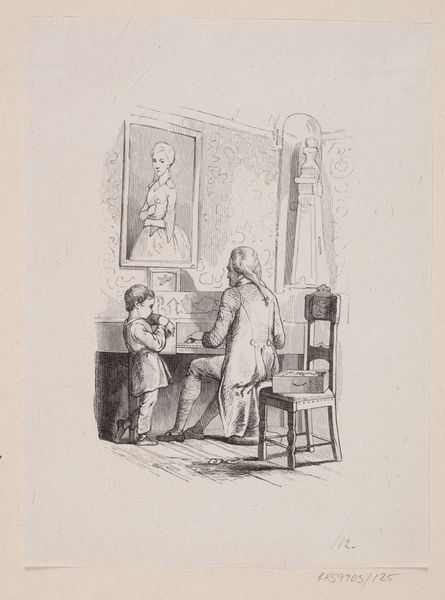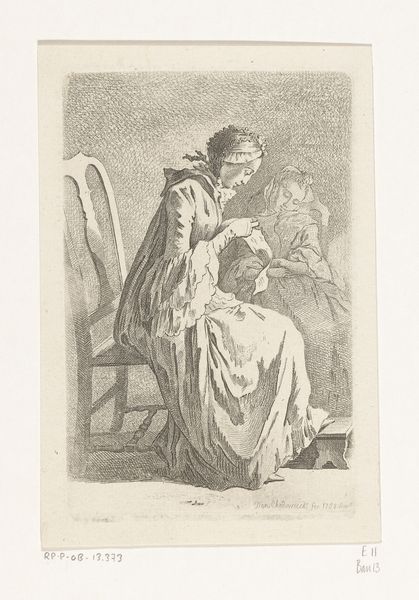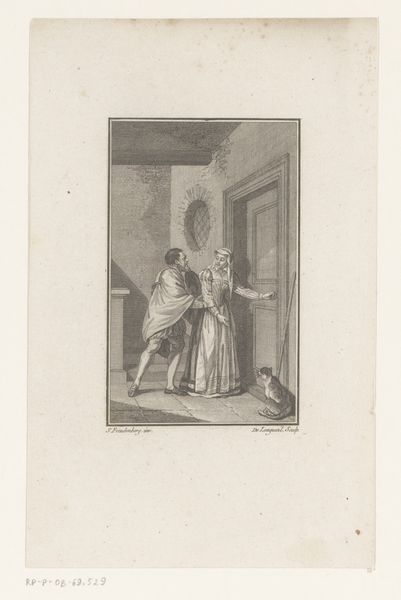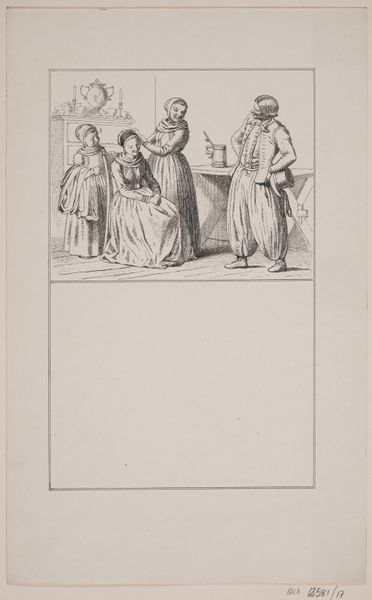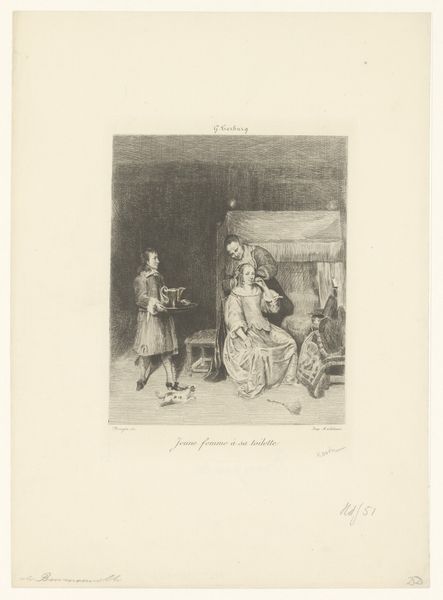
drawing, ink, pen
portrait
drawing
pen sketch
figuration
ink
romanticism
pen
genre-painting
Dimensions: height 112 mm, width 88 mm
Copyright: Rijks Museum: Open Domain
Curator: Here we have "Een vrouw bij haar toilet," or "A Woman at her Toilet," an ink drawing by Joannes Bemme, made sometime between 1800 and 1841. It is currently held in the Rijksmuseum. Editor: There’s an immediate elegance. The delicacy of the ink lines gives it an almost ethereal quality. It looks as though it might be on the verge of disappearing right before our eyes. Curator: Considering Bemme’s lifetime, situated amidst revolutions both political and industrial, how do you interpret the staging of this domestic scene, this almost performative grooming ritual of the central figure? Who is this woman? How much control did she exercise over her own life? Editor: The production itself would’ve been very intentional, carefully crafted and considered. We're looking at high-quality paper, fine ink, a very practiced hand… it speaks to a specific economic bracket, and leisure is very much at play here, literally the space to reflect oneself through the looking glass. Curator: Exactly. Romanticism wasn’t just about nature and freedom. It could also be very much about constructing idealized versions of self and gender roles. The scene presents her within very clearly defined constraints. Her hair, her dress, the accessories on her dressing table. All of these items suggest a performance of femininity. What is the labor in that performance? Editor: And who is assisting in that labor? We see a second person partially reflected in the mirror. The materials tell us something about the networks of labor supporting that lifestyle. Curator: Yes, you’re right, a shadowy male figure serves her and watches her reflection, while outside this room, others labored in less aesthetic conditions for the accessories filling the room. The material realities are far more expansive and complex than they initially seem. Editor: Seeing this focus on the details of life makes me wonder, who consumes images such as these? What conversations do these images help generate around gender and class, as both representation and physical artifact? Curator: That is an interesting thought; seeing these types of drawings opens avenues for reconsidering labor dynamics alongside the aesthetics. Editor: Indeed; seeing and producing images of people consumes more people’s labor than we always recognize.
Comments
No comments
Be the first to comment and join the conversation on the ultimate creative platform.
